 |
 |
 |
| |
IDENTIFICATION AND PROFILE OF POTENT AND SELECTIVE INHIBITORS OF HCV NS5A PROTEIN
|
| |
| |
EASL 2009
Reported by Jules Levin
R.J. Colonno, M. Bencsik, E. Peng, N. Huang, J. Williams, M. Zhong, A. Huq, R. Wobbe*, R. Fathi* and L. Li
Presidio Pharmaceuticals, San Francisco, CA, USA, *XTL Biopharmaceuticals, Valley Cottage, NY, USA
AUTHOR SUMMARY
- Several series of HCV NS5A inhibitors identified with pM potency against HCV genotypes 1a and 1b
- Inhibitors are HCV specific, with coverage of 6/7 genotypes tested
- Presence of 40% human serum reduces potency by 2 to 7-fold
- Combination studies indicate absence of antagonism and potential use with all classes of HCV inhibitors
- Resistance profiles varied, with higher levels observed for genotype 1a and at least 2 substitutions required to approach µM EC50 levels
- Initial ADME and PK profiling results suggest compounds from multiple series have druggable qualities and potential for low dose, once daily dosing in humans
ABSTRACT
Background: With response rates of about 50% and tolerance issues associated with standard of care treatments involving the combination of pegylated IFN and ribavirin, there is a clear need for potent, small molecule inhibitors that target multiple viral targets and can be administered orally in
future combination therapies. Here we report the discovery and preclinical profile of a series of novel NS5A inhibitors.
Methods: HCV antiviral potency assessments, combination studies and
resistance emergence studies utilized standard 3-day HCV replicon systems (genotype 1a and 1b). Initial preclinical pharmacokinetic screening was determined following both IV and PO single dosing in rats at 2 and 10 mg/kg, respectively, along with an assessment of liver concentrations. For spectrum testing, a series of HCV 1b replicon constructs were made in which the NS5A gene of HCV 1b was replaced with the NS5A genes of other HCV genotypes.
Results: Through medicinal chemistry efforts, several advanced series of NS5A lead inhibitors were identified that exhibited potent and selective activity (EC50 <1 nM) in both the HCV 1a and 1b replicon assays.
Antiviral activity was maintained against other HCV genotypes beyond 1a and 1b in transient replicon assays. No significant activity was observed against control viruses such as BVDV. Cellular cytotoxicity levels (CC50) were in excess of 10 µM in several cell lines, yielding a selectivity index of >10,000. NS5A inhibitors were additive in combination studies involving IFN and inhibitors of other HCV proteins. Lead compounds showed oral bioavailability in animal PK studies, with elevated liver concentrations relative to serum levels, and potential for once daily
dosing in humans. Resistance selection studies indicated that high level resistance will likely require multiple substitutions within the NS5A gene. Resistance emergence appeared relatively slowly compared to parallel studies with NS3 inhibitors, suggestive of a higher resistance barrier. Structurally different inhibitors exhibited a range of sensitivities to emerging resistance substitutions.
Conclusion: A series of highly potent and selective NS5A inhibitors have been
identified which demonstrated in vitro and in vivo profiles supportive of their advancement and development as clinical candidates.
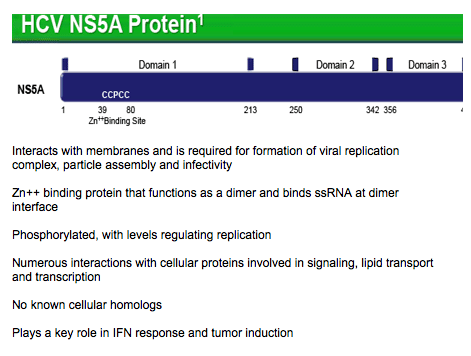
Interacts with membranes and is required for formation of viral replication complex, particle assembly and infectivity
Zn++ binding protein that functions as a dimer and binds ssRNA at dimer interface
Phosphorylated, with levels regulating replication
Numerous interactions with cellular proteins involved in signaling, lipid transport
and transcription
No known cellular homologs
Plays a key role in IFN response and tumor induction
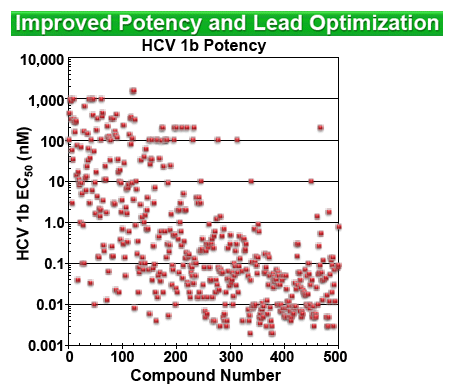
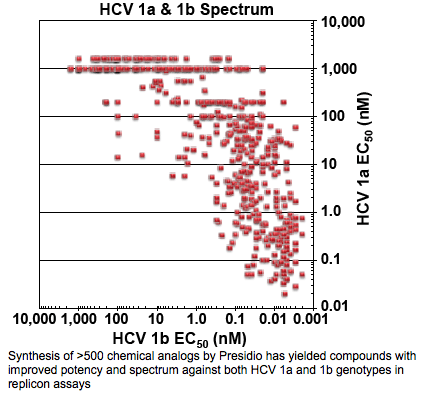
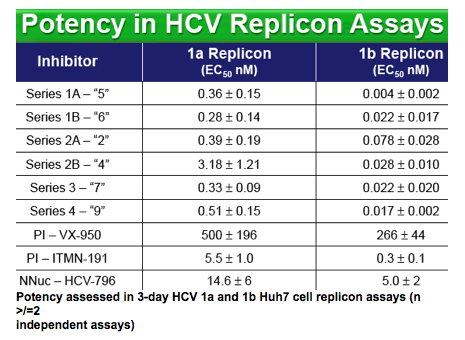
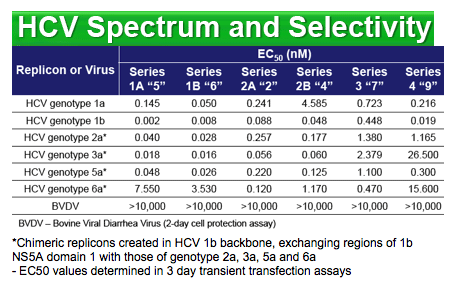
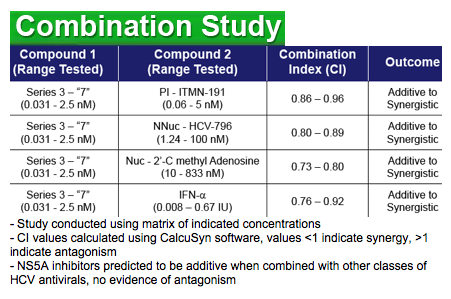
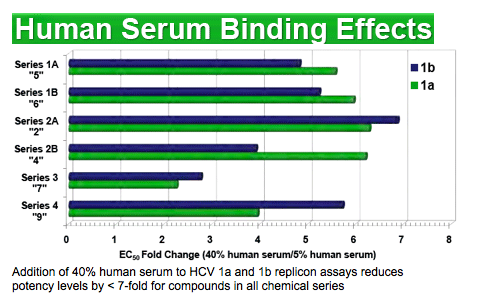
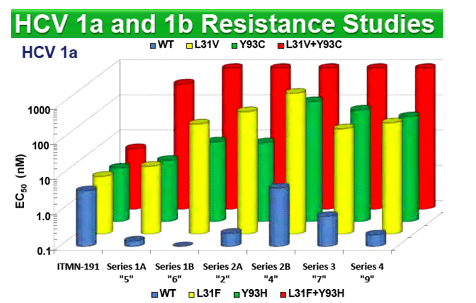
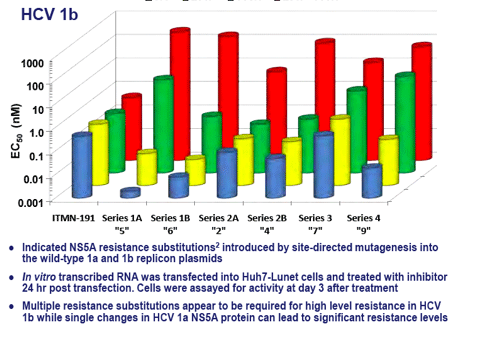
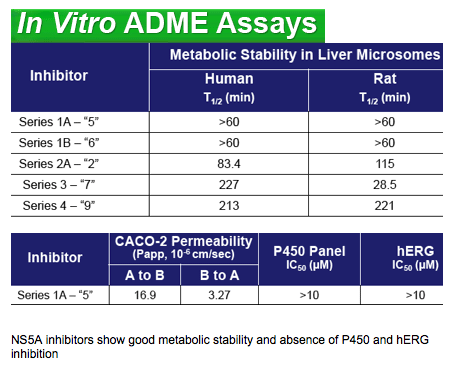
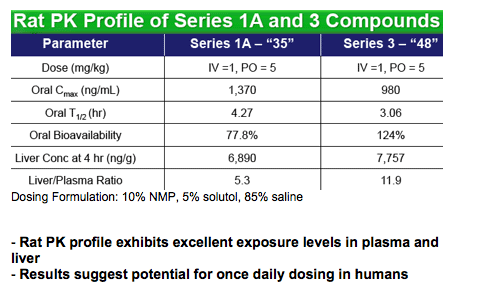
REFERENCES
1Schmitz, U. and Tan, Seng-Lai. NS5A - From Obscurity to New Target for HCV Therapy. Recent Patents on Anti-Infective Drug Discovery. 3 (2008).
2Gao, M. et al., HCV NS5A Inhibitors: From Screen Lead to Clinic. 15th Intl Symposium on HCV and Related Viruses, San Antonio, TX (2008).
|
| |
|
 |
 |
|
|